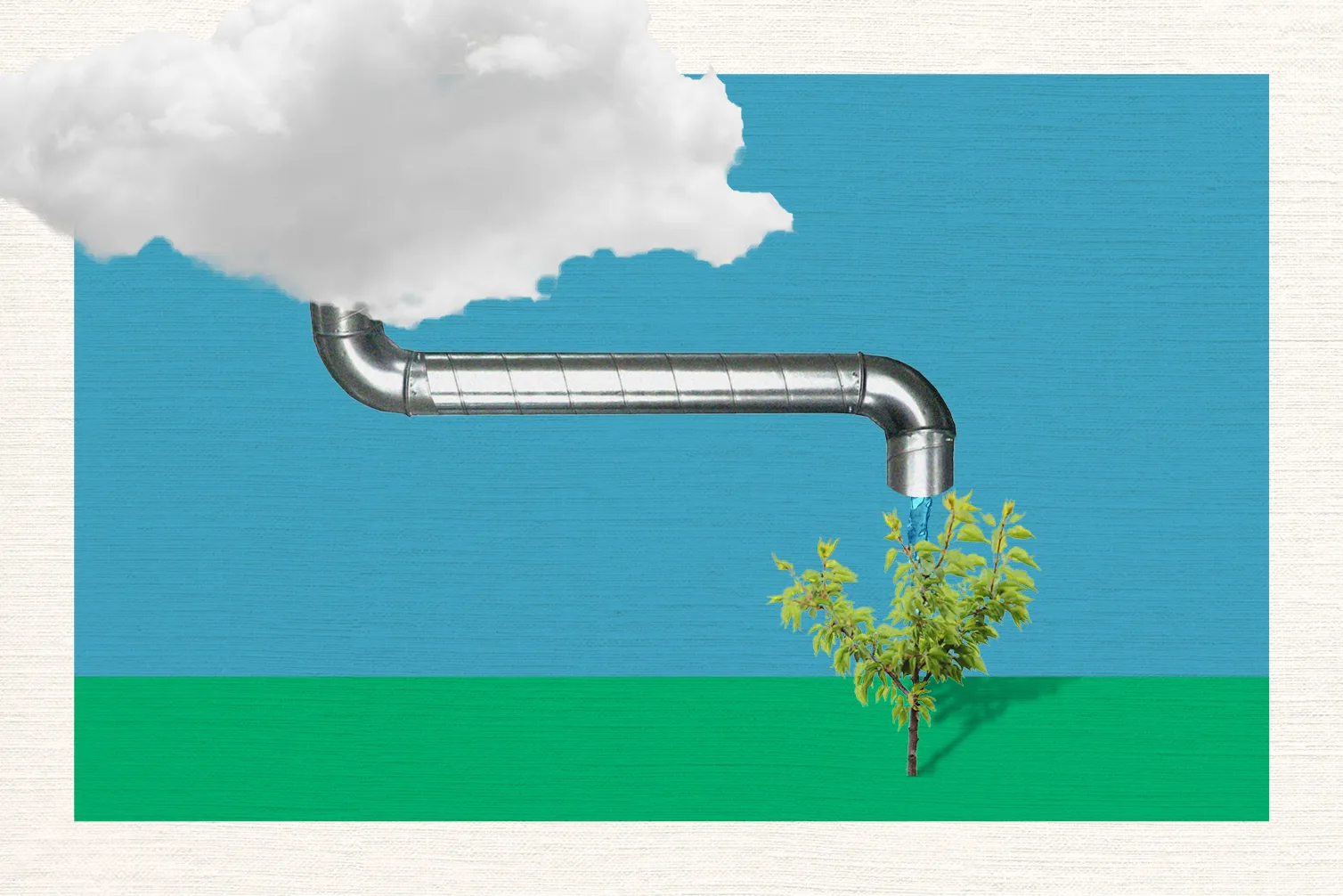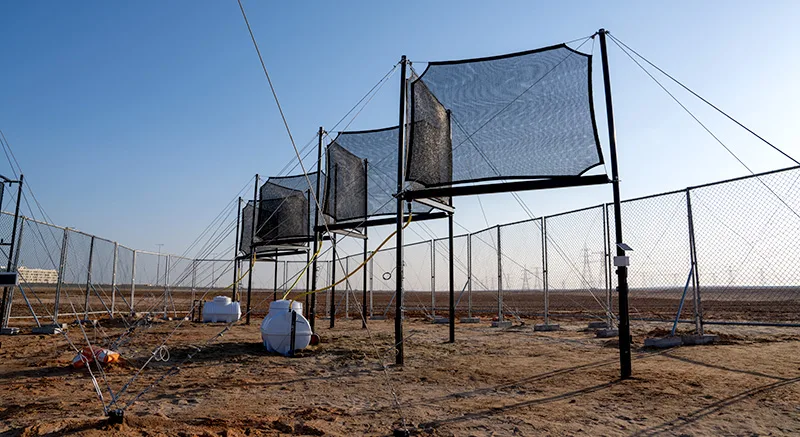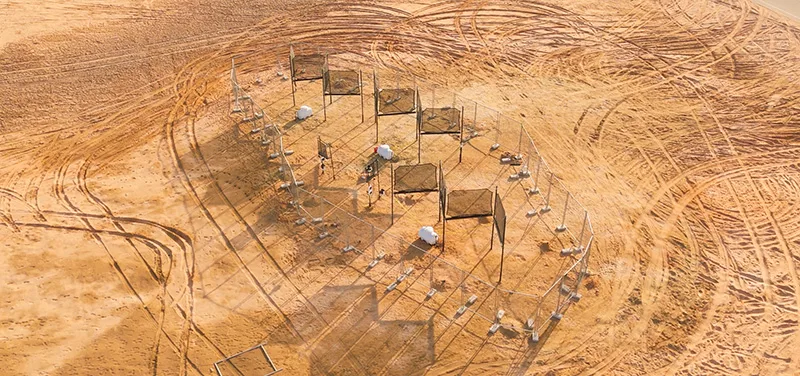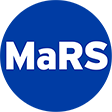Tapping an alternate water source
By Nora Underwood | September 29, 2025

It’s estimated that by 2030 global demand for water will outpace supply by 40 percent. Canadian startup Permalution has come up with a novel solution.
In 2015, the on-going drought in California was so severe that then-governor Jerry Brown reduced water usage in urban areas by 25 per cent and imposed fishing bans. Those measures weren’t enough: That year, millions of trees died, coho salmon populations were on the brink of collapse and farmers contended with withered crops. It was in this time of loss, however, that entrepreneur Tatiana Estevez had her eureka moment.
The recent business school graduate, who was visiting San Francisco at the time, was shocked by the devastating financial and emotional impact the drought was having on the region. And yet, she says, when she looked out the window, “I couldn’t see anything because of the fog. I wondered, ‘Why are we not using this water source?’”
Estevez started researching methods of collecting water from clouds and fog; the following year, she founded the startup Permalution.
Based in Sherbrooke, Que., Permalution has developed a modular system that can collect up to 2,000 litres of water a day. While the concept of harvesting fog sounds like something out of science fiction (some call it “milking the clouds”), the technique has been around in various forms for centuries. In fact, the first fog harvesting technology — buckets beneath trees to collect condensation — date back to the Inca Empire.
But as water scarcity becomes more of an issue in various parts of the world, there’s a growing need for creative solutions — both old and new — that can conjure water out of thin air.

Permalution currently has a project underway in Abu Dhabi.
A thirsty planet
The torrential storms and flooding increasingly experienced in parts of North America and Europe belie a grim reality: We don’t have enough water. While water covers 70 percent of the planet, fresh water — the water people drink, use and farm with — is rare, at about 3 percent. To make matters worse, we’re draining the world’s largest aquifers faster than they can be replenished from rain or snow.
Climate change and continued overconsumption (data centres around the world guzzle around 560 billion litres each year) are straining our water systems even further. As UNESCO reports, close to half of the world’s population currently don’t have consistent access to clean water, and that number will likely only increase in the coming years. By 2030, it’s estimated that demand for fresh water will outpace supply by 40 percent.
“It’s very serious,” says Corinne Schuster-Wallace, a professor of geography and planning at the University of Saskatchewan and executive director of its Global Institute for Water Security. “Think about population growth, about our changing climate, about the increasing demands for products, then about all the demands that being placed on water — water for industry, for energy, for food, for safe and secure communities — and put that against a backdrop of changing land use and land cover, changing amounts, timings, intensities of precipitation.”
Dealing with water scarcity, Schuster-Wallace says, comes down to two elements: supply and demand. Water-efficient technologies can help address increased demand; supplies can also be augmented by finding new sources of water and improving methods of storage. “Diversifying water sources is important. And in places where you have relatively constant fog and/or high humidity, fog harvesting is absolutely a valid solution,” she says. “It has been used for a long time, and technological advances only increase its viability. Similar to rainwater harvesting, in almost all cases it is likely going to be important but insufficient to fully rely on.”

Permalution’s fog harvesting systems can collect up to 2,000 litres a day.
Taking a cue from nature
Over the last nine years, Estevez and her team have fine-tuned a system of trapping moisture. First, they use a predictive model to determine where the fog hot spots are in a certain area and deploy radar to measure the water quality and the estimated yields in each of those sites. They then install fog catchers — polypropylene mesh membranes that attract water — in those prime spots. (Early netting designs were 20 square metres; the company has now scaled up to ones that measure 100 square metres.) When the fog or cloud touches these screens, the water droplets stick and eventually form bigger drops, at which point gravity pulls them down into a cistern. From there, the water flows either to an irrigation or filtration system, depending on the application, or directly to where it is needed.
Perhaps counterintuitively, more water can be collected from fog harvesting than rainfall, says Estevez. Because fog is made up of tiny drops of water or ice crystals that move horizontally, as opposed to rain, which falls vertically, she adds, netting is able to capture more moisture.
The company’s design was inspired by nature, namely tall sequoias, redwoods and conifers and the processes they use to hold onto rainwater and fog to self-irrigate. The dense canopies of these trees act like a giant net, and the waxy coating on their needles minimizes water loss; as the moisture accumulates, the water drips down to the ground. Permulation’s netting, which has a special coating that moisture adheres to, aims to mimic those canopies.
Since 2018, the company has been working with the state of Nayarit in Mexico, providing its technology to help protect the forest fire–plagued area’s many endangered species, including two types of orchid, which require 16 litres of water a day to thrive. The area gets almost no rain but has fog about 80 percent of the year. “We overflowed the cistern pretty much every day,” says Estevez, and the orchids species were successfully propagated and reintroduced in the wild. Now the state is expanding the project, and Permalution is setting up a larger fog collector.
The company’s solution is applicable in a wide range of sectors. “Our goal is to be in places where we’re needed,” she says. Estevez and her team are working with players in the food and beverage industry as well the cement sector in Peru and Chile, and are gearing up to start a sustainable water project for agricultural usage in Quebec later this year. Plus, the company has a project in Abu Dhabi and multiple projects in Mexico underway.
While fog harvesting alone is not the sole answer to the deepening water scarcity crisis, says Schuster-Wallace, it’s a relatively simple, low-cost and adaptable technology that has big potential for scaling. And compared to other novel water sourcing technologies — deep groundwater extraction, desalination of seawater, wastewater treatment — that are energy intensive and may disrupt the environment in other ways, fog harvesting is a sustainable solution.
“We’re way more affordable than desalinization plants, more sustainable than groundwater extraction and more efficient than rain,” says Estevez. “It doesn’t take energy to run. We can go into the most remote places, the driest places on Earth, as long as there are clouds.”
Find out more about Permalution and 1,200 other ventures on MaRS Connect.
Photo illustration: Stephen Gregory; Photos: Unsplash; Photos courtesy of: Permalution
 Nora Underwood
Nora Underwood